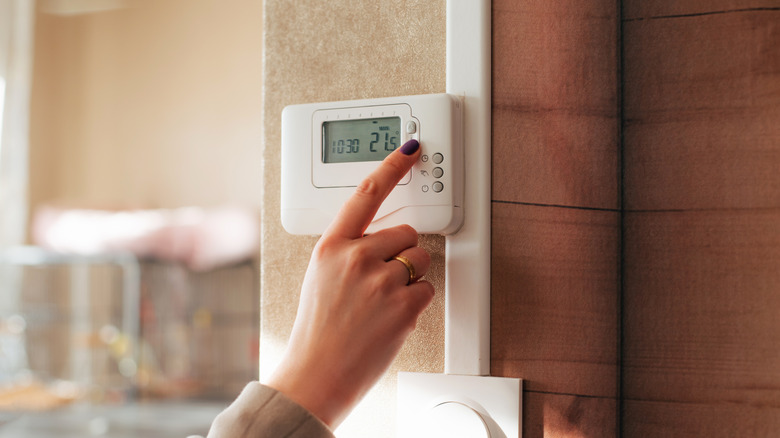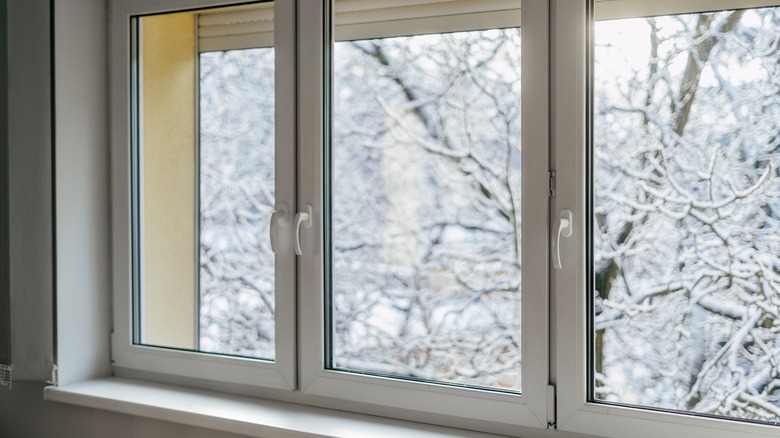Heating Bill Too High? There's A Cheap Fix You're Overlooking
Home heating bills can get pretty high in the winter months, and in the midst of all the other financial burdens of the season, every extra dollar hurts. Fortunately, if your energy bill seems weirdly higher than usual and you want to save on heating costs in the home, there are some steps you can take. Before you resort to turning the heat off and relying on only blankets to keep you warm, consider whether there's something else you're overlooking — particularly when it comes to the windows, which may be allowing too much air to flow in and out of the home.
Warm air can escape from such cracks, and cold air may come in. Both of these things cause your heating system to work harder (and thus, your wallet to strain itself more). If you're not taking steps to minimize this airflow or if your windows are damaged, you could be having a harder time than necessary keeping your home warm throughout the colder season. Consider checking for air leaks, resealing your windows, and making a few small changes to improve insulation in your home and to ensure that your energy bills aren't any higher than they have to be.
Here are steps to improve your windows to reduce heating costs
To reduce heating costs and make a room warmer on the cheap, you may want to update your current windows. But don't stress over the cost of brand-new windows: You can (hopefully) do this a lot more affordably.
Consider fixing window problems such as cracks and sealing gaps with weatherstripping and caulk if needed. Especially if you have an older home, there can sometimes be significant crevices alongside windows, and these can let an excessive amount of cold air in. However, even small, hairline cracks can be a big problem. Be sure to check for these by running your hand along the area — see if you feel a cool breeze coming in at a particular spot. Then, fill these cracks as needed. Fortunately for you, the cost of caulking windows is very low. You'll usually need to pay about $0.05 to $0.20 per linear foot to caulk a window yourself, or about $1.25 to $4 per linear foot to hire a professional for the job. To apply caulk, you'll simply need to use a caulking gun to fill gaps. Go around the exterior edges of a window frame, ideally in one continuous motion.
You should also think about adding window treatments or coverings such as curtains, shades, and blinds to minimize energy transfer. You may also want to install a window film or tint to improve insulation and efficiency. On the other hand, if you don't want to go to the trouble of fixing up old windows and you have the budget for real changes, you may want to consider buying energy-efficient windows instead. While these windows will cost you much more upfront, they can help ensure energy efficiency, saving you plenty as time goes on.

